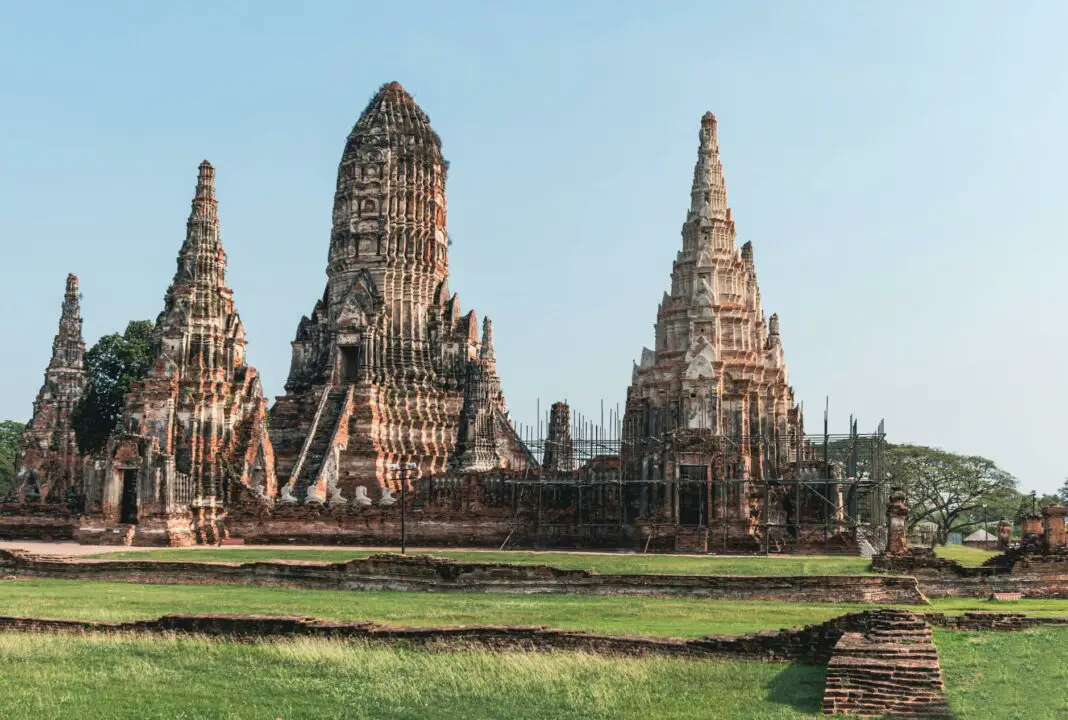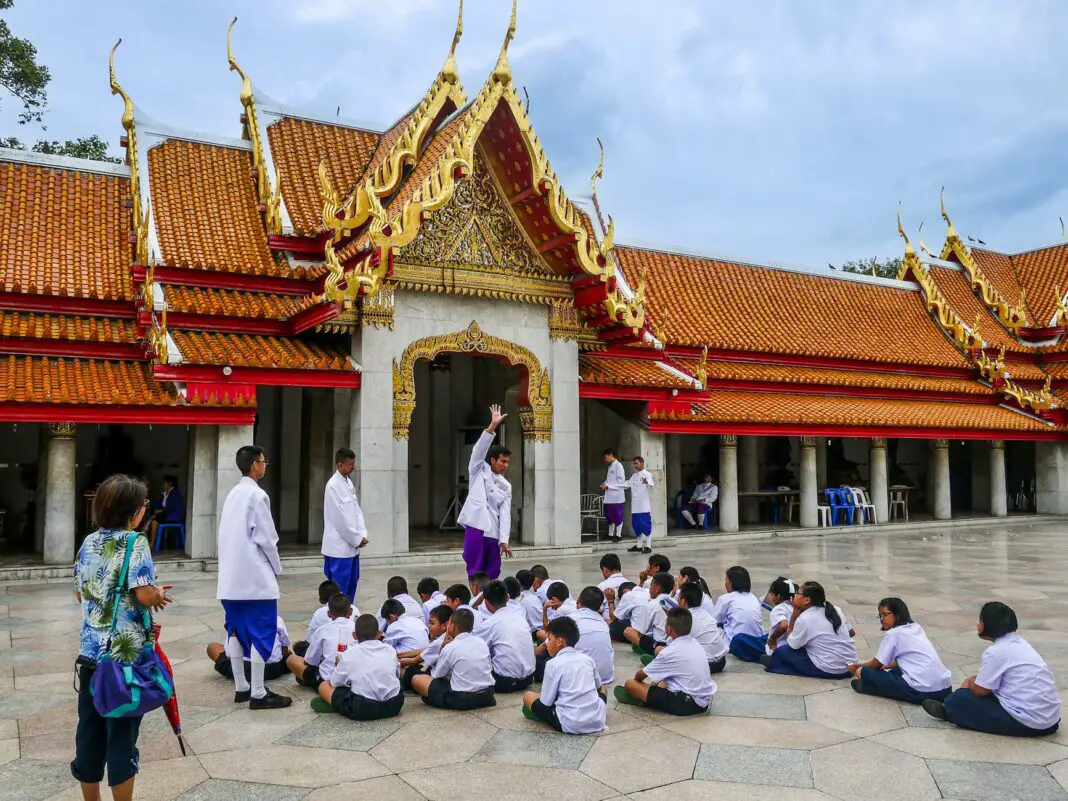Thailand, often revered for its picturesque landscapes and vibrant culture, holds secrets that go beyond its palm-fringed beaches and bustling markets. At the heart of its allure lies a rich tapestry of stories woven into its Buddhist architecture. Many travelers overlook these humble structures, missing out on a treasure trove of history and spirituality. This blog post dives deep into Thailand’s architectural wonders, exploring why they may indeed be the world’s hidden treasures. Whether you’re a history buff, a spiritual seeker, or simply an avid traveler, this journey promises to inspire and enlighten.
From majestic temples that echo with the whispers of the past to serene sculptures that invite contemplation, Thailand’s Buddhist architecture offers a visual feast. It stands as a testament to the artistry and devotion of its creators while inviting visitors to explore deeper meanings. The intricate designs and vivid colors serve not only as a backdrop for meditation and worship but also as compelling symbols of peace and enlightenment. Join us as we navigate through this enchanting realm, highlighting the stories, significance, and must-visit sites along the way.
Table of Contents
- Introduction to Thailand’s Architectural Wonders
- The Historical Significance of Buddhist Architecture in Thailand
- Must-Visit Temples: A Traveler’s Guide
- Cultural Impact: The Role of Buddhism in Thai Society
- Actionable Insights for Your Trip to Thailand
- Discover the Unseen Gems of Thailand
- Frequently Asked Questions
Introduction to Thailand’s Architectural Wonders
Buddhist architecture in Thailand is not merely a feast for the eyes; it is a profound expression of faith, community, and artistry that transcends time. Each temple, each structure, crafted with meticulous detail, is steeped in stories that resonate with the very core of Thai identity. Many people who visit Thailand find themselves captivated by the colors, designs, and spirituality enveloping each site. Observing the prayers of monks, the offerings of devotees, and the serene smiles of visitors creates a unique ambiance that is undeniably inviting.
Moreover, understanding the architectural styles and their origins allows travelers to appreciate the underlying principles guiding these magnificent edifices. From the unique Lanna style of the north with its intricate wooden structures to the grandiose and ornate styles of the south, each variation showcases the rich diversity of Thailand’s cultural heritage. This multifaceted exploration not only enhances one’s travel experience but also fosters a deeper appreciation of the values and traditions of the Thai people.
The Historical Significance of Buddhist Architecture in Thailand
Thailand’s Buddhist architecture serves as a window into its historical landscape, marked by centuries of cultural exchange and spiritual evolution. With influences from Indian, Chinese, Burmese, and Khmer styles, Thai architecture has evolved into a unique expression of faith through the ages. The very act of temple construction signifies a collective commitment to spirituality and community well-being, showcasing the nation’s steadfast adherence to its Buddhist roots.
Furthermore, temples are often built to commemorate significant historical events or royal figures, transforming into living museums of heritage. For instance, Wat Pho, known for its stunning Reclining Buddha, dates back to the 16th century and reflects the artistic ingenuity that flourished during the Ayutthaya period. Exploring these historical sites not only unveils the architectural beauty but also connects visitors to the myriad of stories that have shaped Thailand’s identity over the centuries.
Must-Visit Temples: A Traveler’s Guide
In a land rich with sacred sites, discerning which temples to visit can feel overwhelming. However, certain temples stand out not just for their beauty but for the experiences they offer. Wat Phra Kaew in Bangkok, as the home of the Emerald Buddha, is a must-see. Its intricate details and remarkable jade statue draw visitors into a world of worship and reverence. Additionally, the tranquil atmosphere of Wat Mai Suwannaphumaham in Laos is an opportunity for travelers to connect with local monks and engage in a unique cultural exchange.
Another gem is the historical city of Ayutthaya, where the ruins of ancient temples serve as captivating reminders of a glorious past. Wat Chaiwatthanaram, with its majestic prang, allows visitors to immerse themselves in stories of the Siamese kingdoms. Each temple visit is a unique chapter in the ongoing narrative of Thailand’s spiritual journey, making them indispensable stops on your travel itinerary.
Cultural Impact: The Role of Buddhism in Thai Society
Buddhism is ingrained in the fabric of Thai society, influencing everything from daily practices to major national festivals. The temples are not merely places of worship but also centers of community life. Locals gather for ceremonies, social events, and charitable endeavors, reinforcing a deep sense of unity and shared purpose. The rituals conducted within these sacred spaces play a crucial role in preserving cultural traditions and passing them down through generations.
Moreover, the spiritual teachings embedded within Buddhist architecture promote values such as compassion, mindfulness, and ecstasy, serving as guiding principles for countless individuals. Consequently, these structures serve as enduring beacons of hope and inspiration, influencing everyday life and encouraging both locals and visitors to seek deeper connections with their surroundings and one another.
Actionable Insights for Your Trip to Thailand
Planning a trip to experience Thailand’s Buddhist architecture requires more than just a checklist of must-see sites. Consider taking part in meditation retreats available at various temples, offering immersive experiences that deepen understanding and appreciation of Buddhist practices. Engaging with local guides can also provide insights into the stories behind each temple, enhancing the value of your visit.
Additionally, consider timing your visits to coincide with local festivals, such as Loy Krathong, to witness the temples illuminated by thousands of floating lanterns. Ensuring respectful attire when visiting sacred sites is essential; cover shoulders and knees to show reverence for the spiritual environment. By approaching each site with an understanding of its significance, you’ll create lasting memories and an enriching travel experience.
Discover the Unseen Gems of Thailand
The allure of Thailand’s Buddhist architecture is undeniable, inviting a deeper exploration of a culture rooted in spirituality and artistry. These sacred spaces are more than mere buildings; they are living expressions of faith, history, and community that continue to resonate today. By prioritizing visits to these remarkable sites and embracing the stories they tell, you allow yourself to uncover the hidden gems of Thailand.
Whether you’re wandering through an ancient temple or engaging with local monks, the experiences you gather will resonate well beyond your trip, enriching your understanding of Thai culture. Elevate your travel experience by diving into the sacred and historical realms of Thailand’s architectural wonders.
Frequently Asked Questions
What are the best times to visit temples in Thailand?
Usually, the best times to visit are during early morning or late afternoon when the weather is cooler, and the temple atmosphere is less crowded. Additionally, temple festivals can offer a unique experience.
Do I need to dress a certain way when visiting temples?
Yes, visitors should dress modestly, ensuring shoulders and knees are covered as a sign of respect when entering temples. Some sites may provide sarongs or shawls for those in need.
Can I take photos inside the temples?
While photography is allowed in many areas, certain sections may be restricted. Always check for signage and follow any guidelines provided by temple officials.
Are there guided tours available for temple visits?
Absolutely! Guided tours are widely available, providing valuable insights into the history and significance of each temple, enhancing your overall experience.
Is it possible to engage in meditation at the temples?
Many temples offer meditation programs or retreats. Ensure to research in advance and inquire at the temple upon arrival for available options.
Image Credit: Pexels





